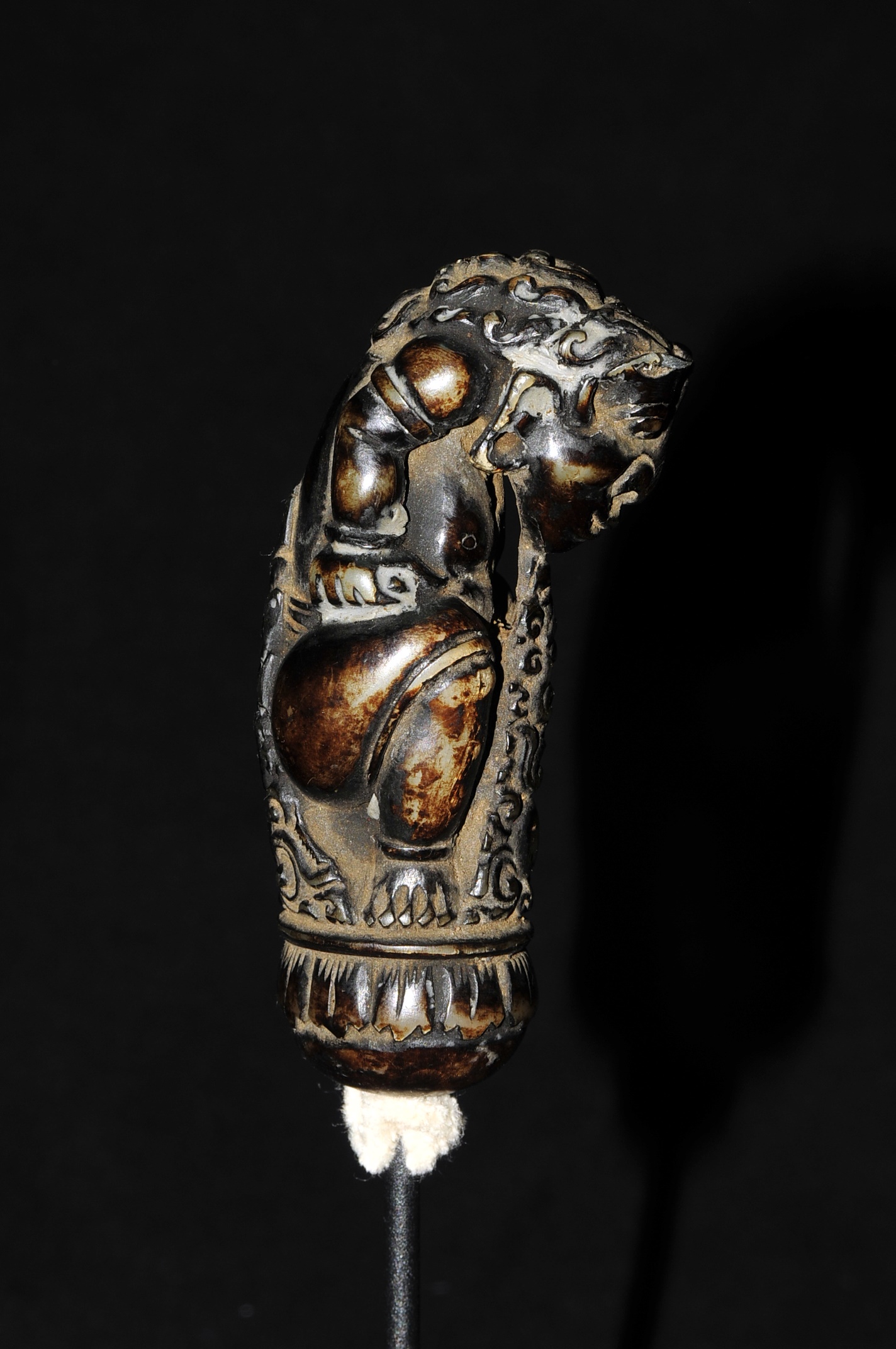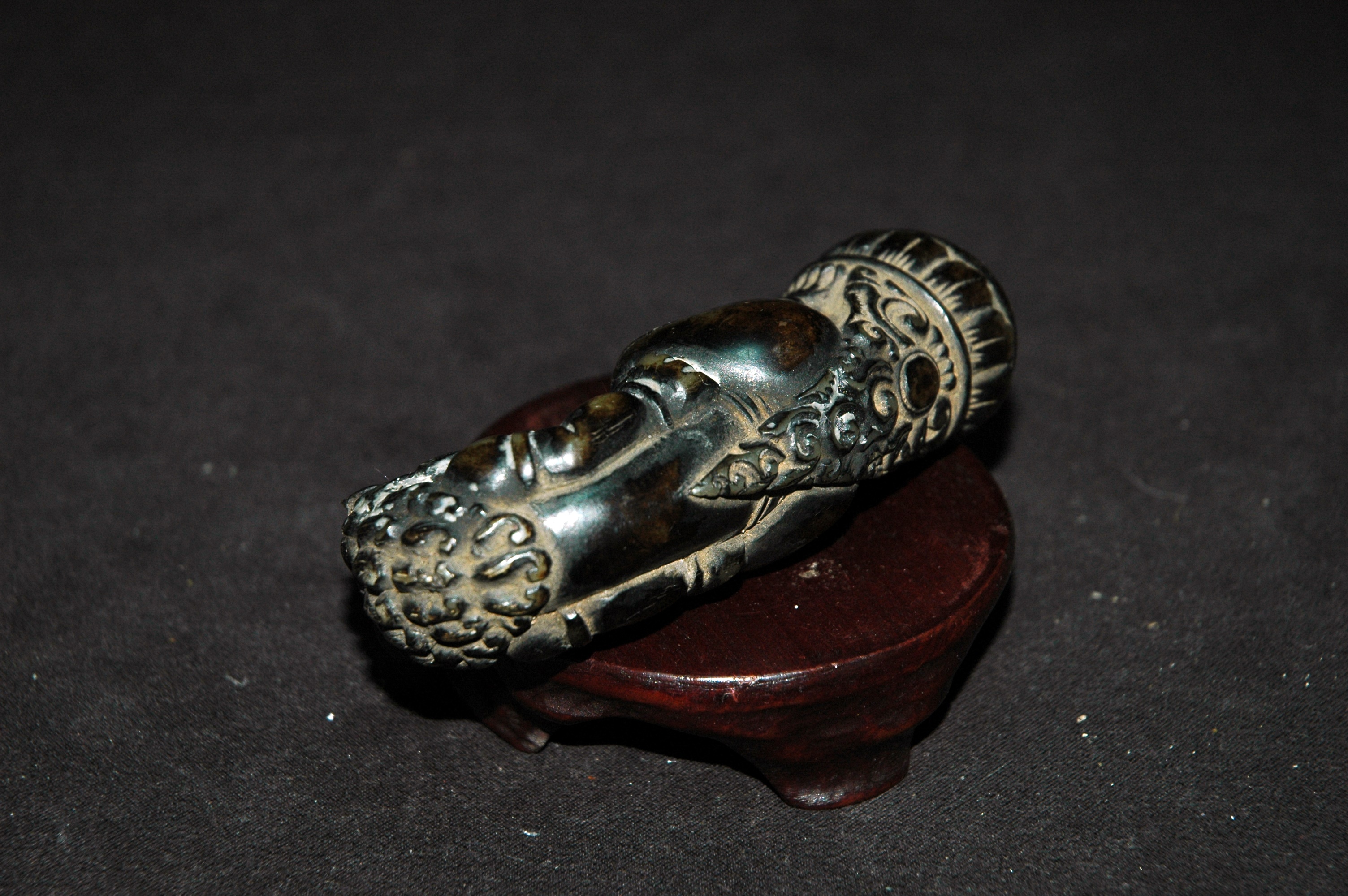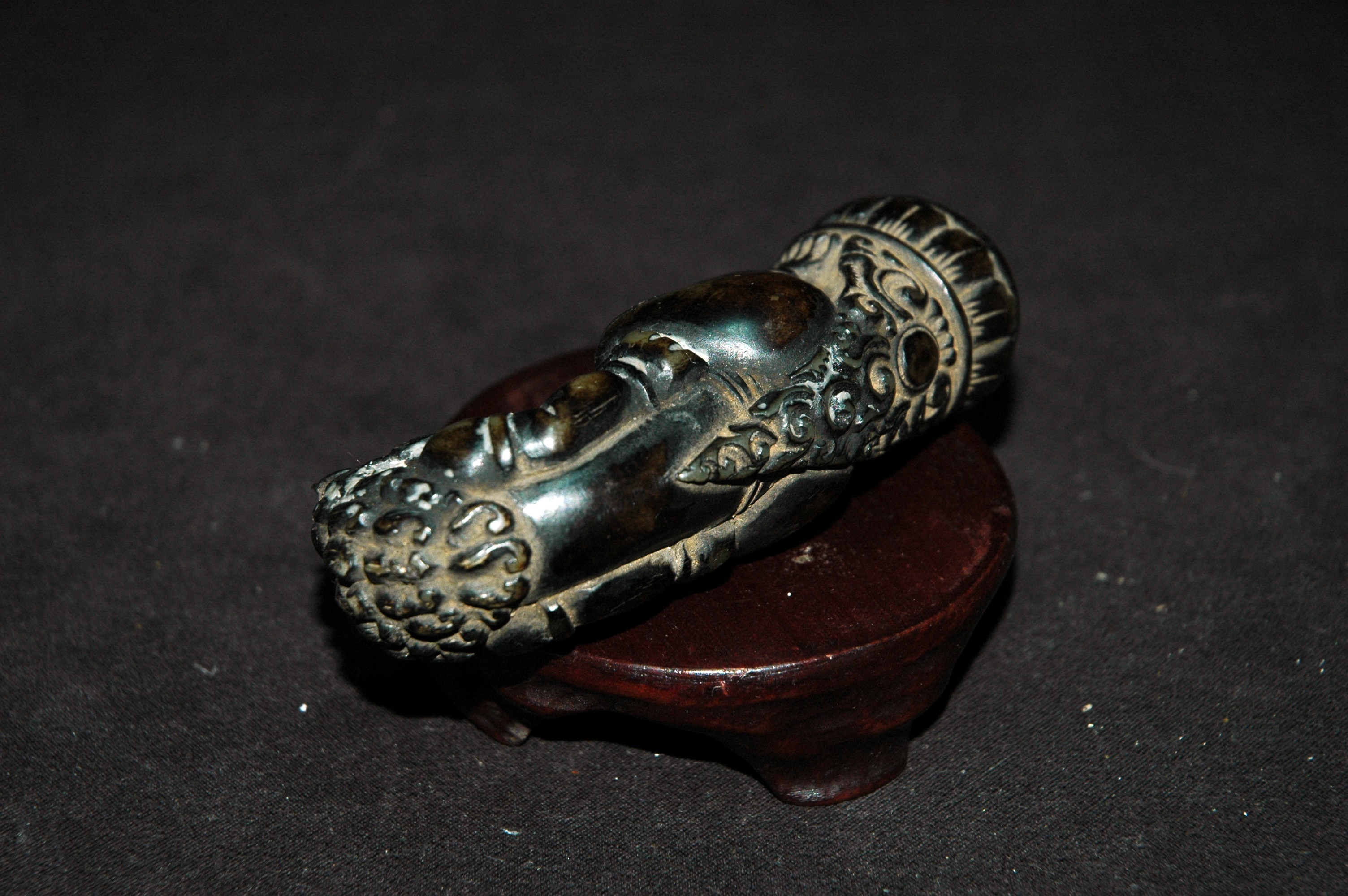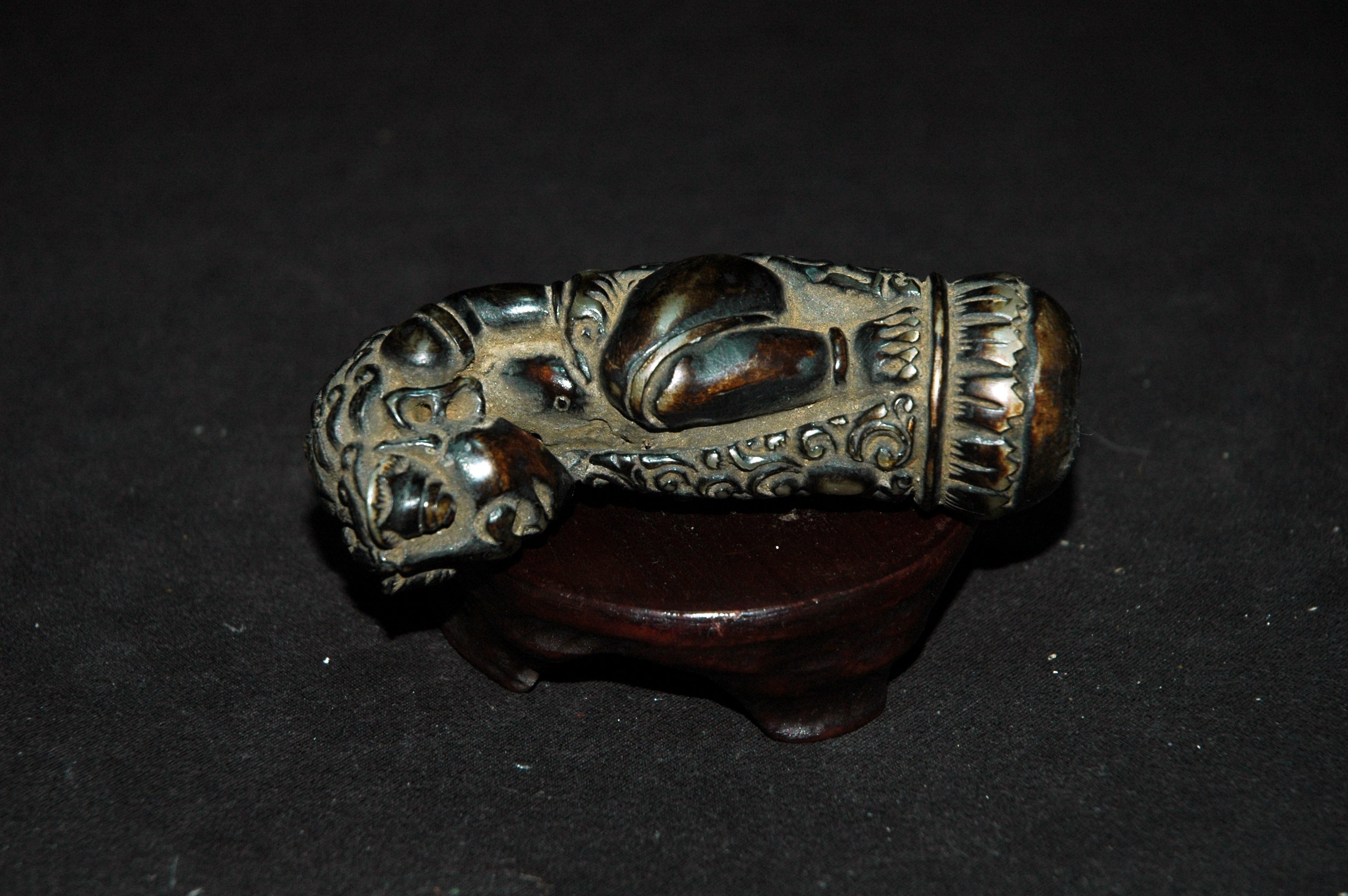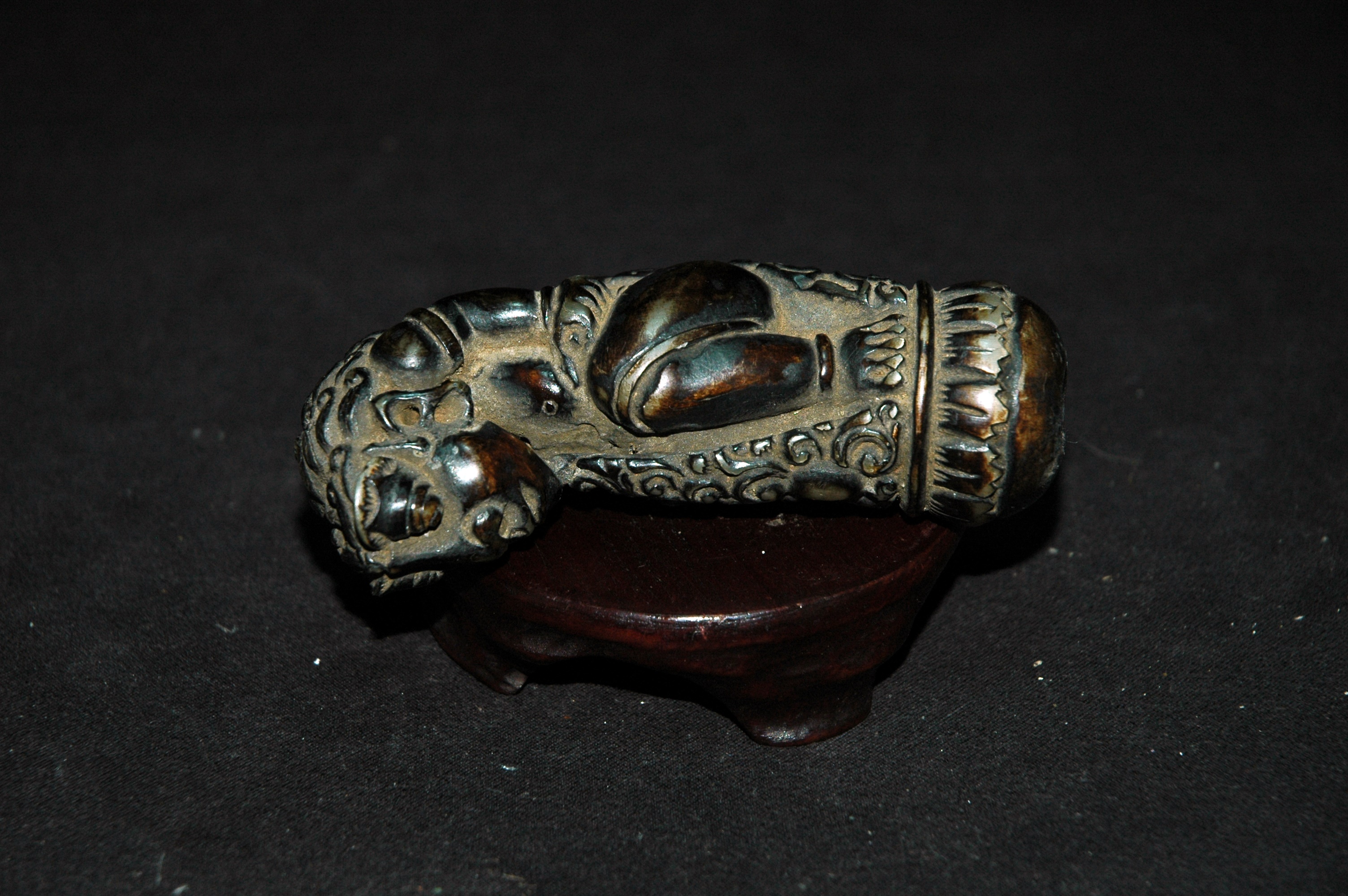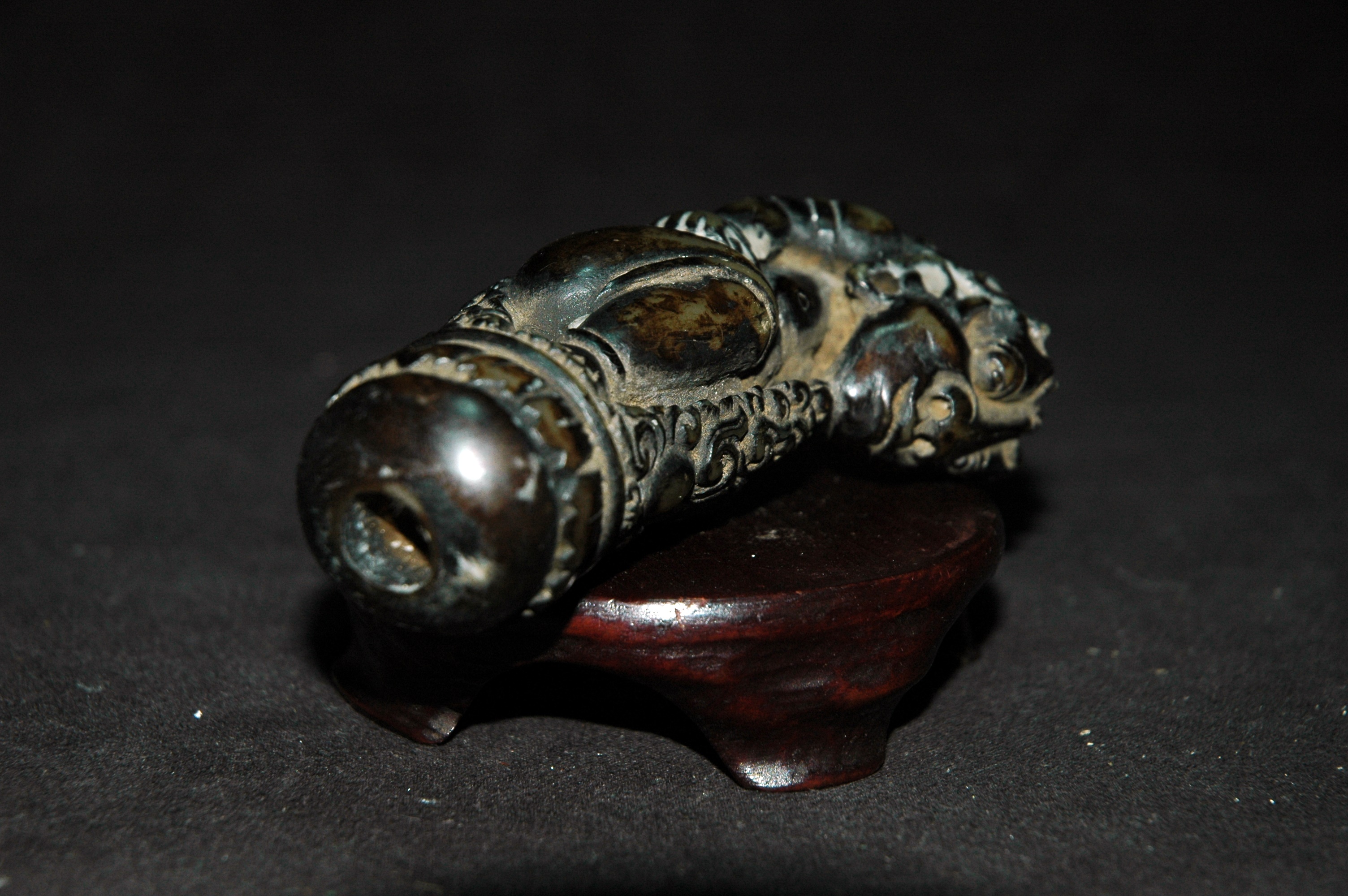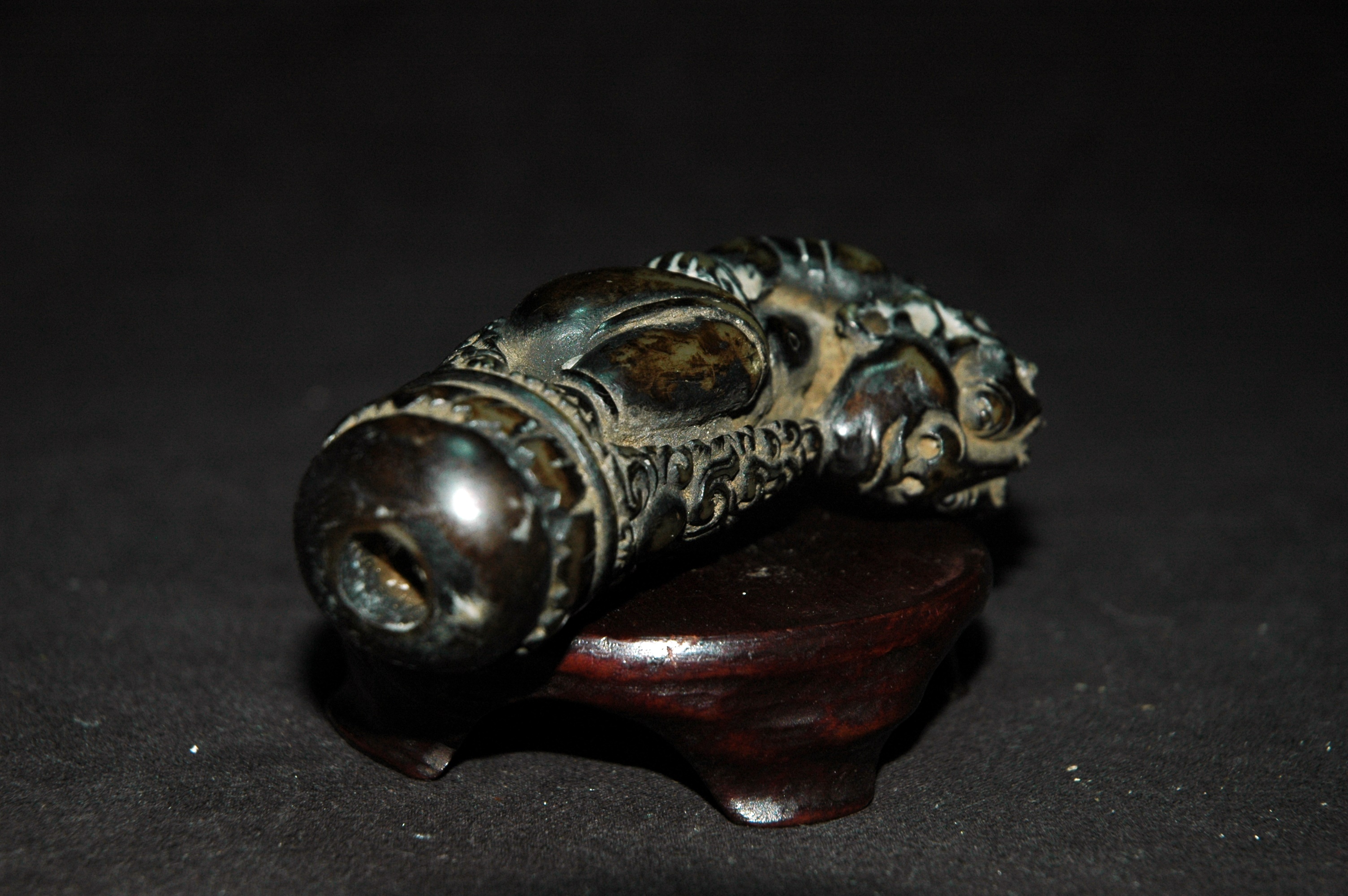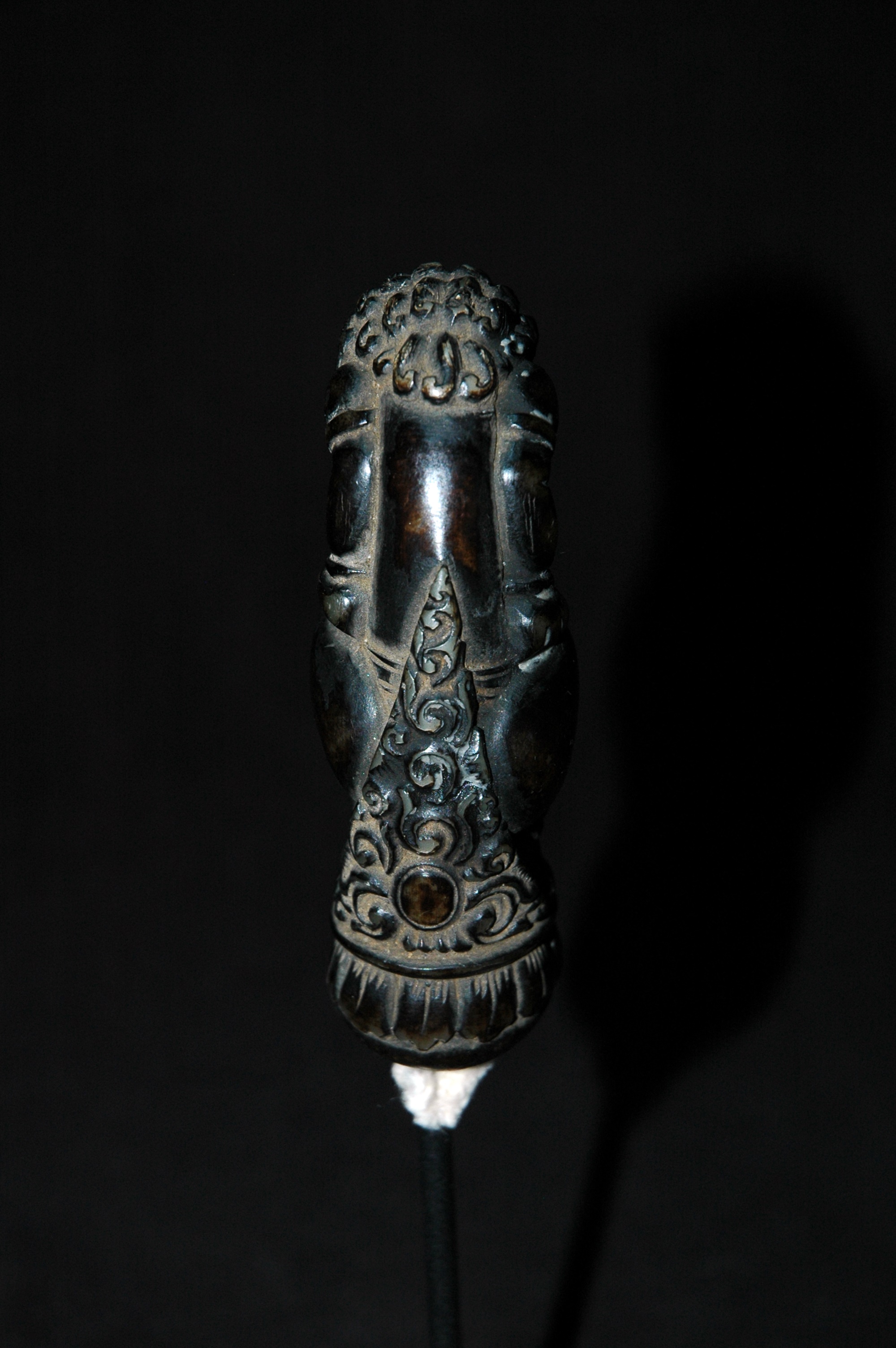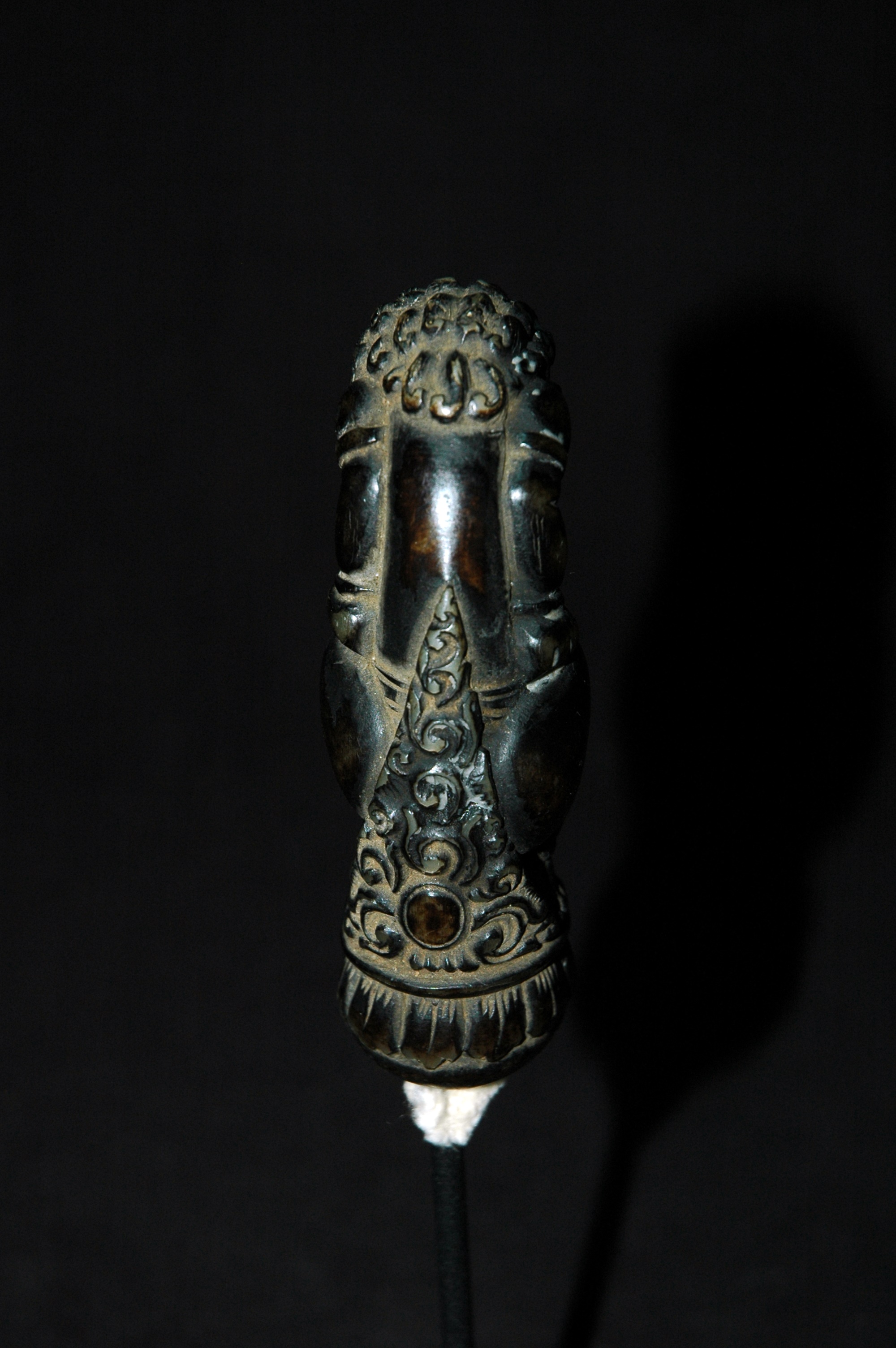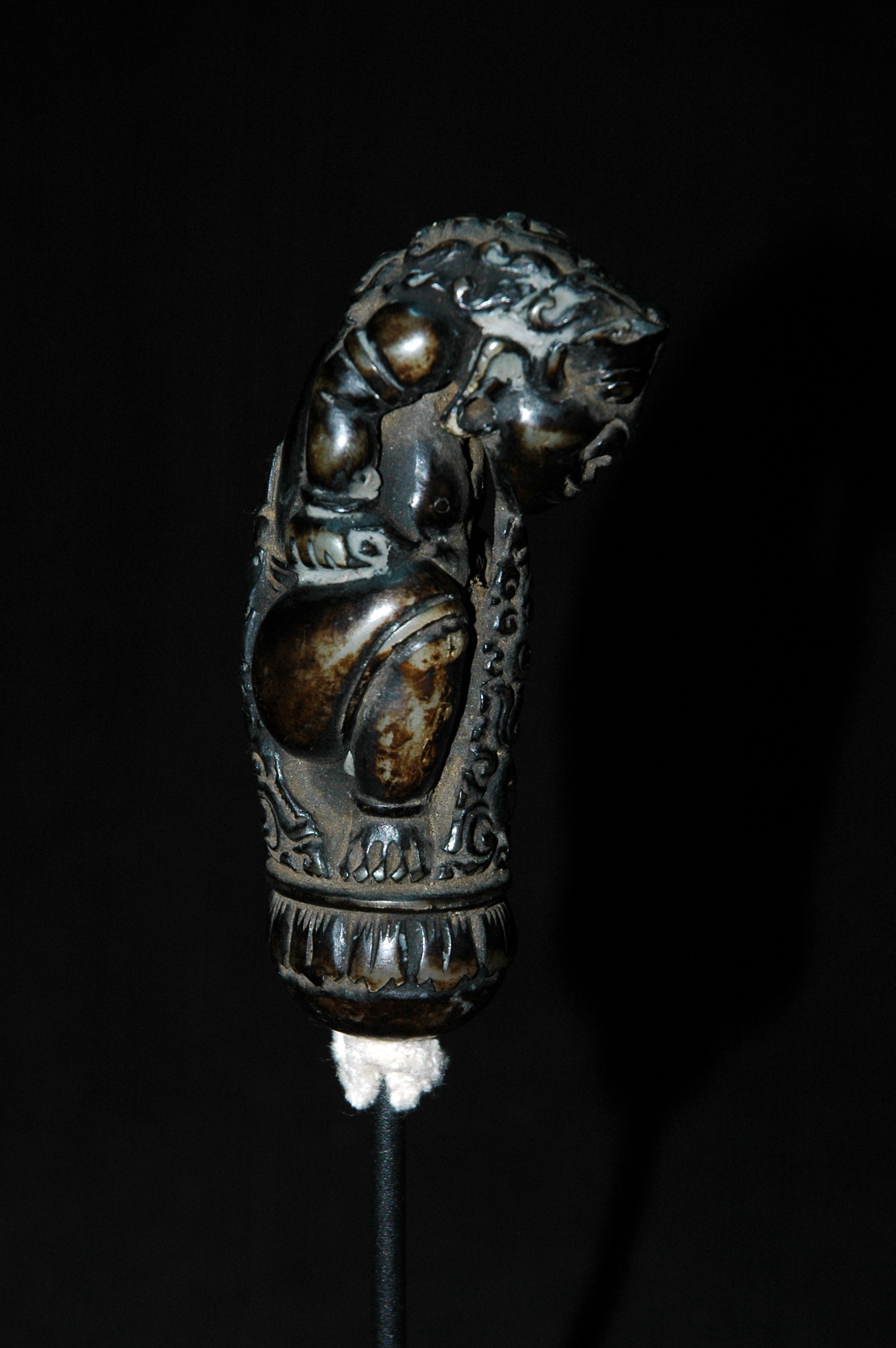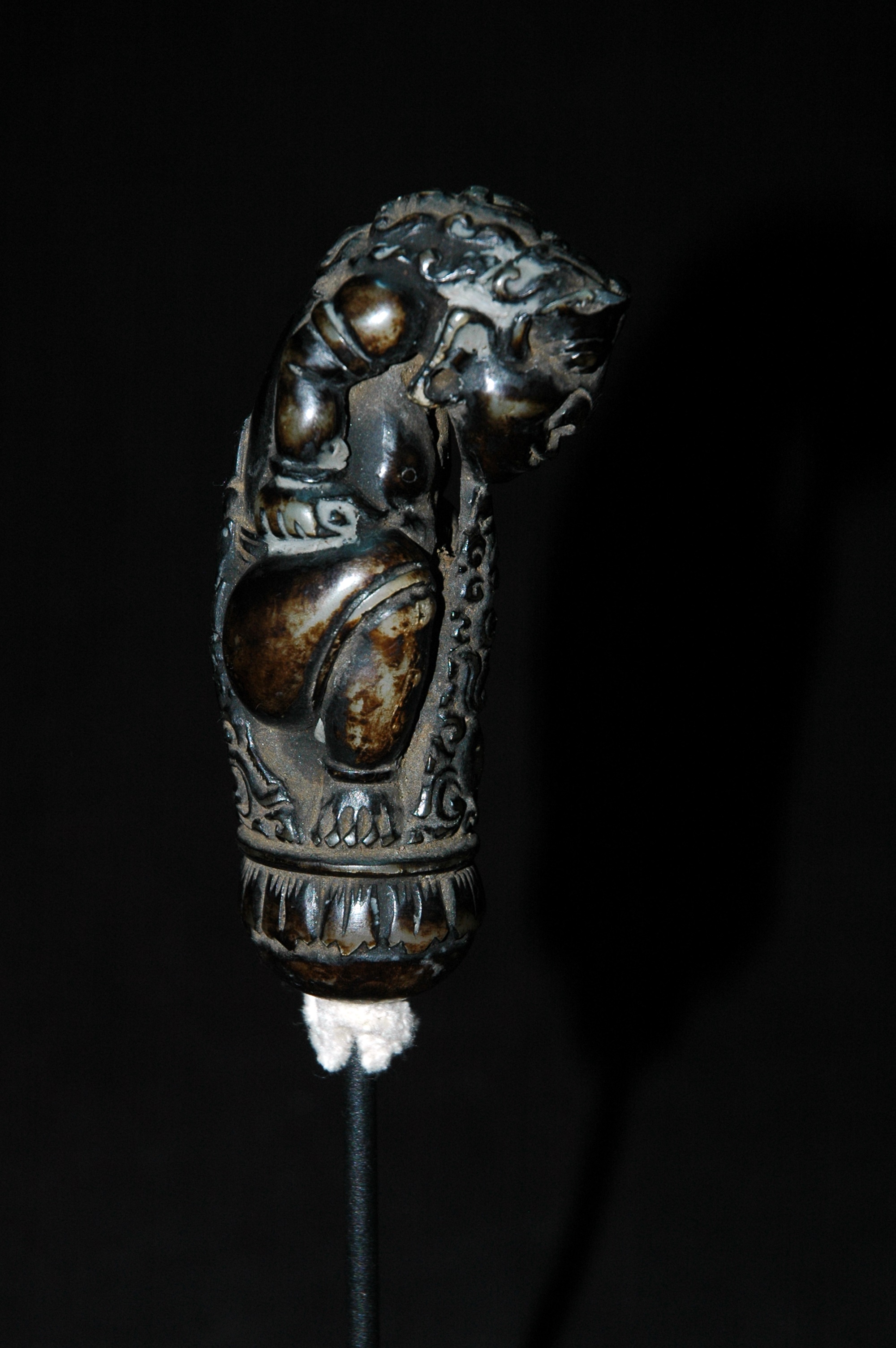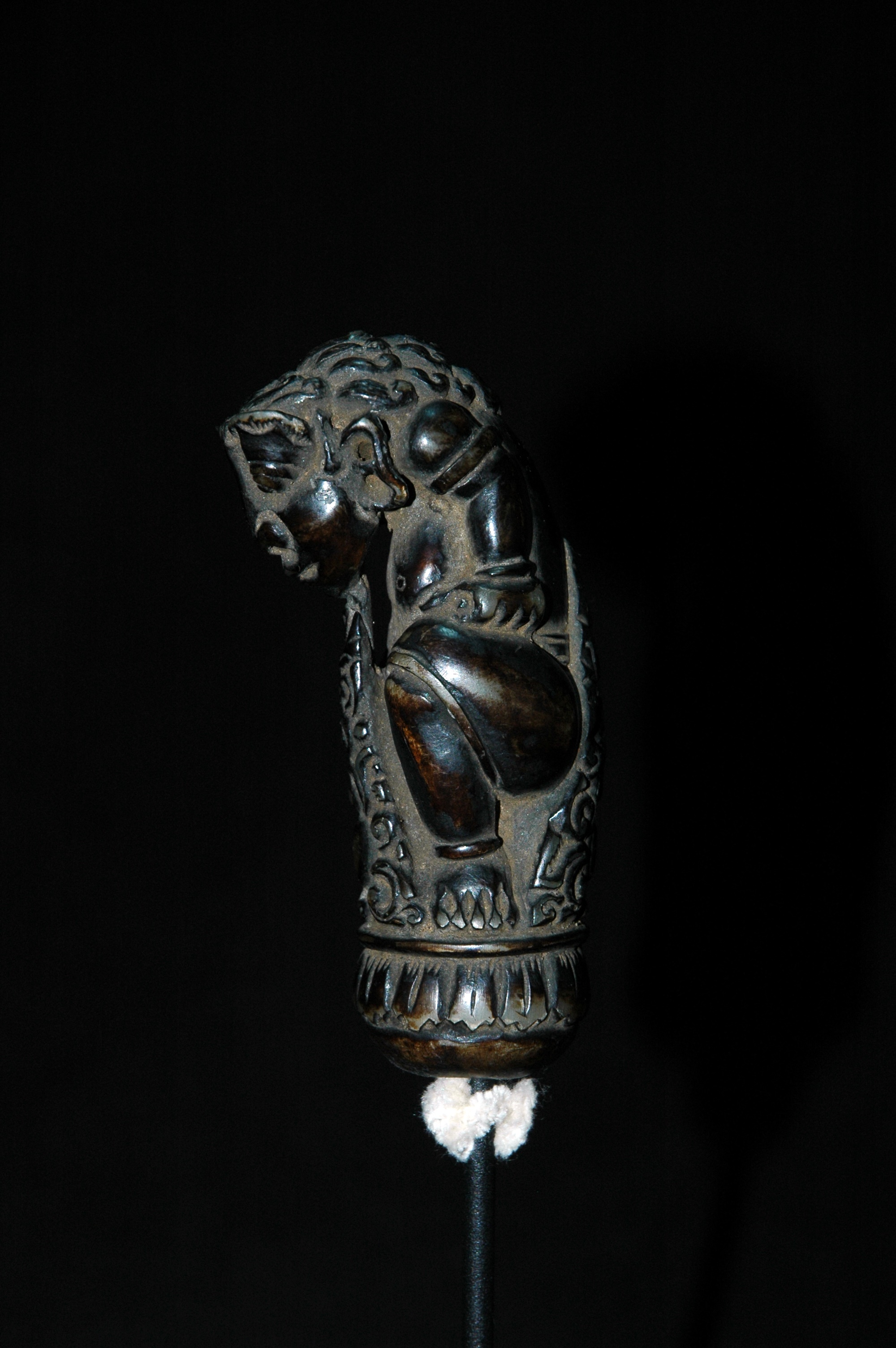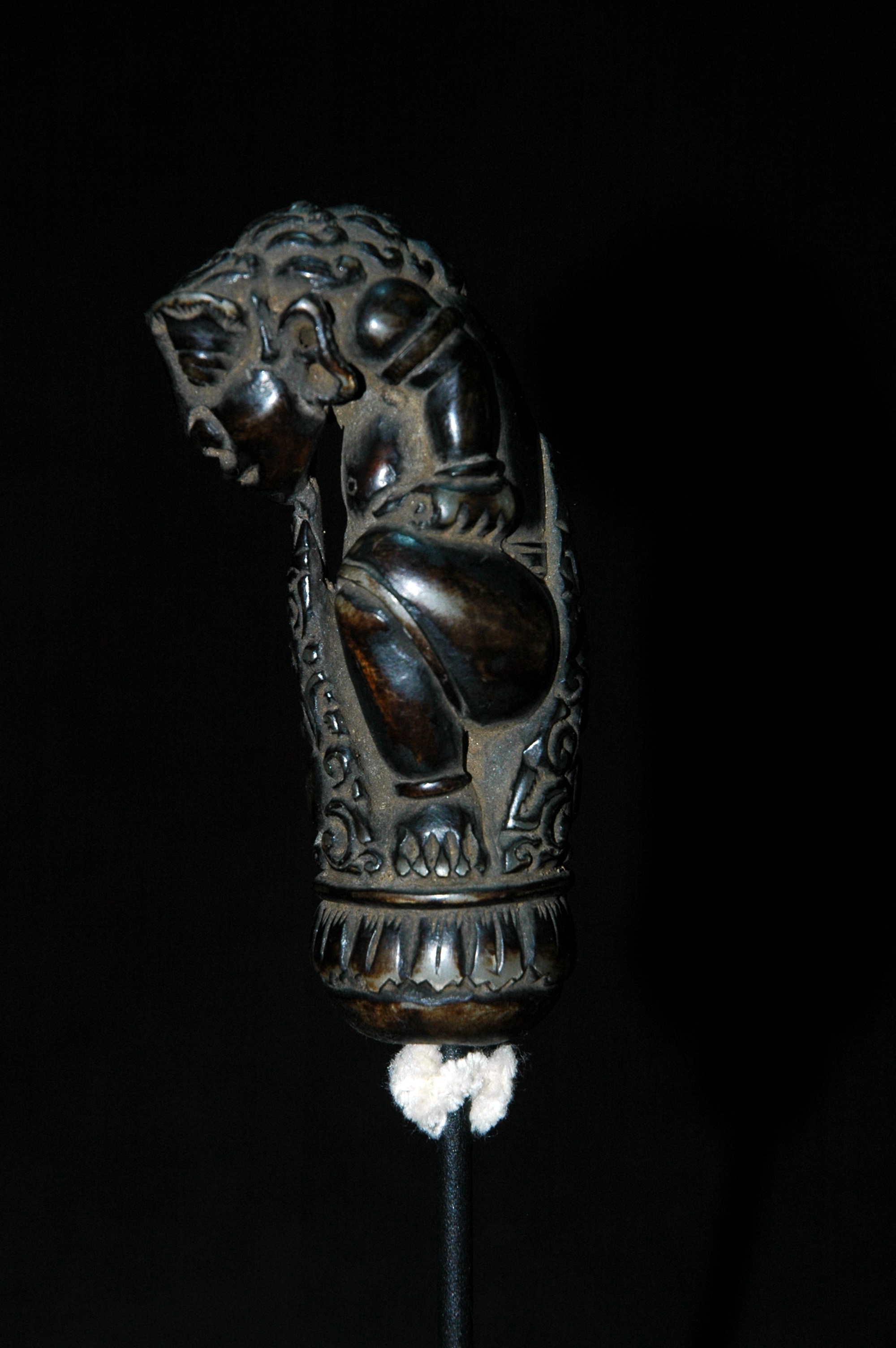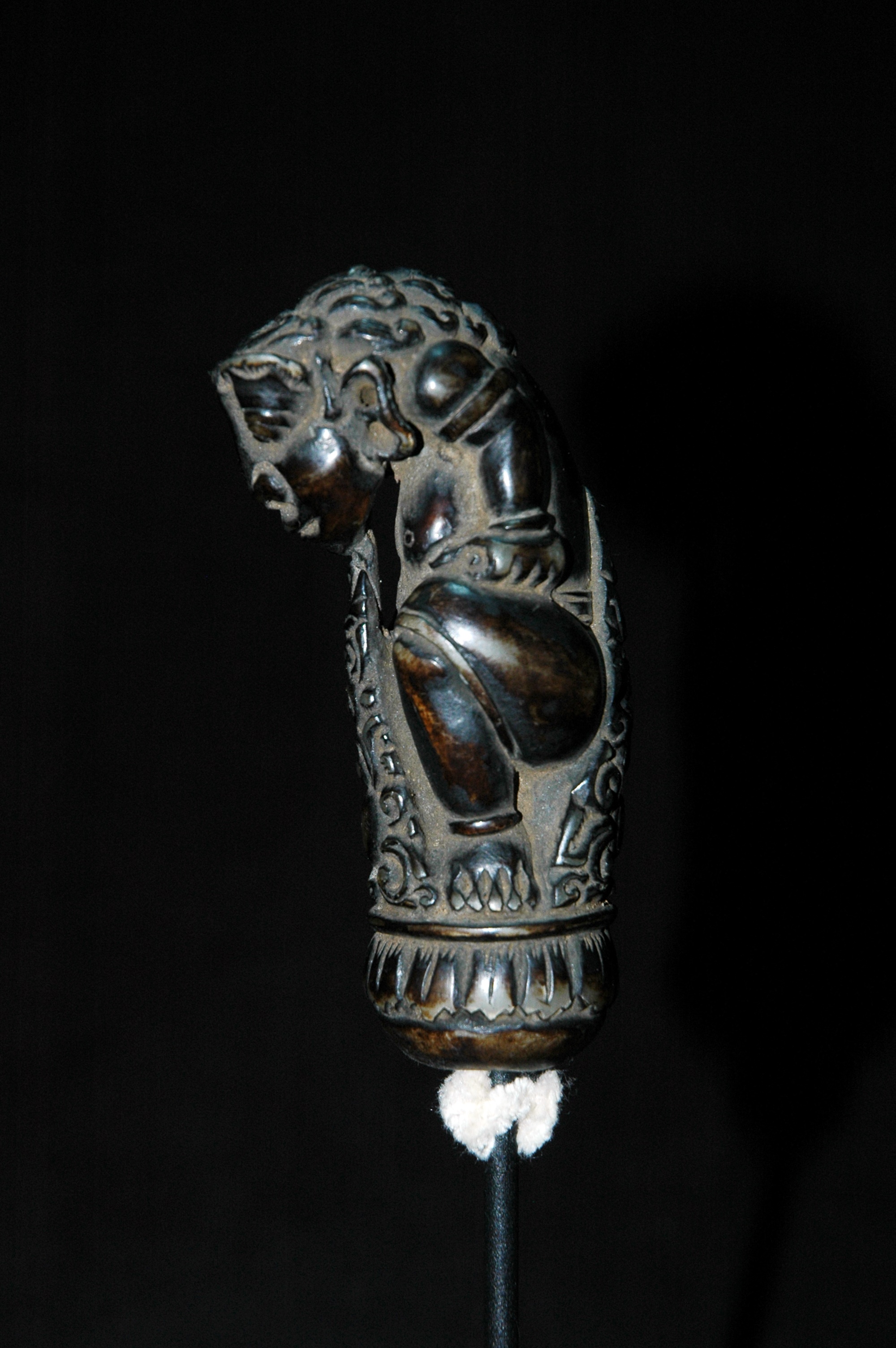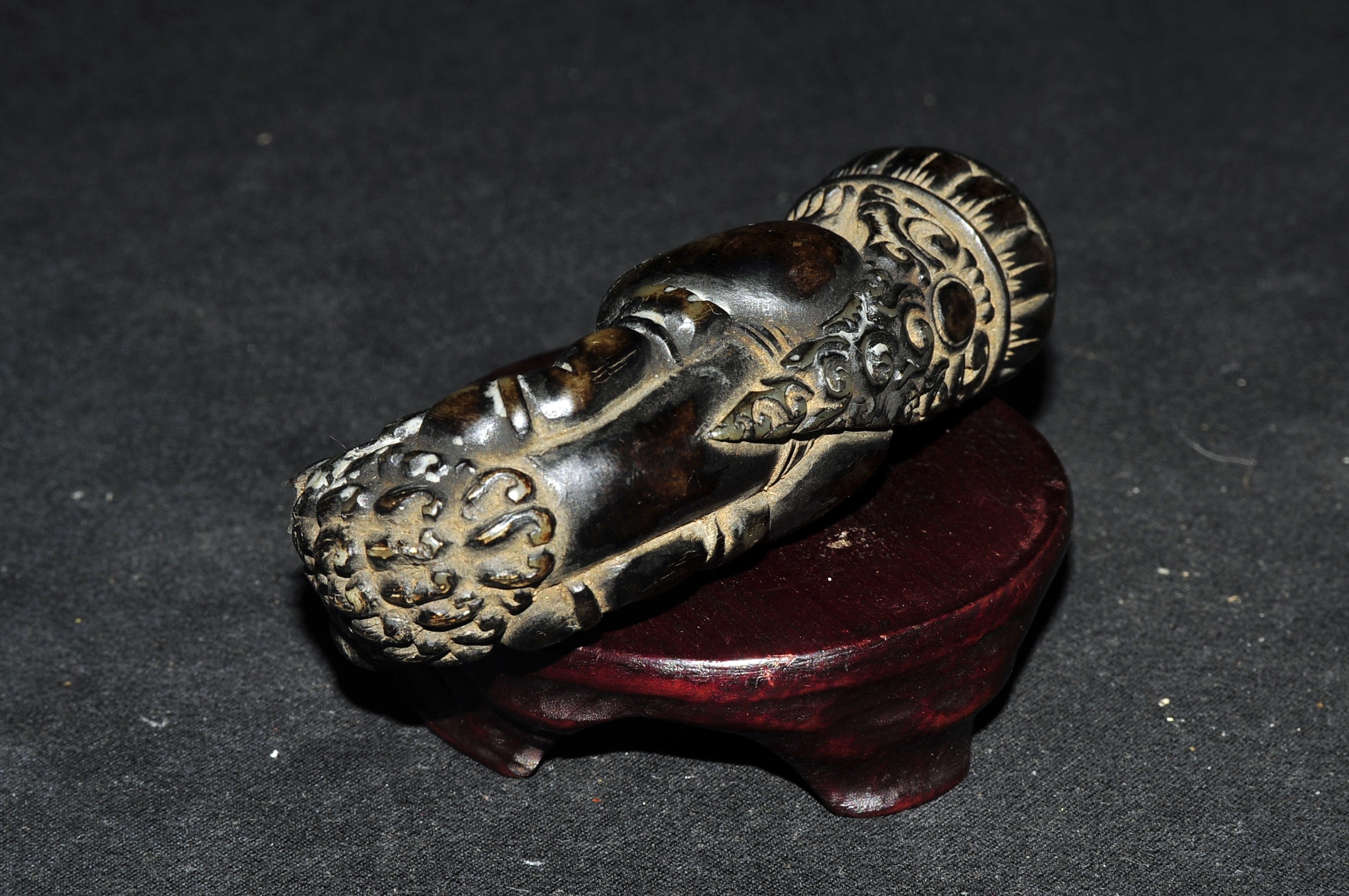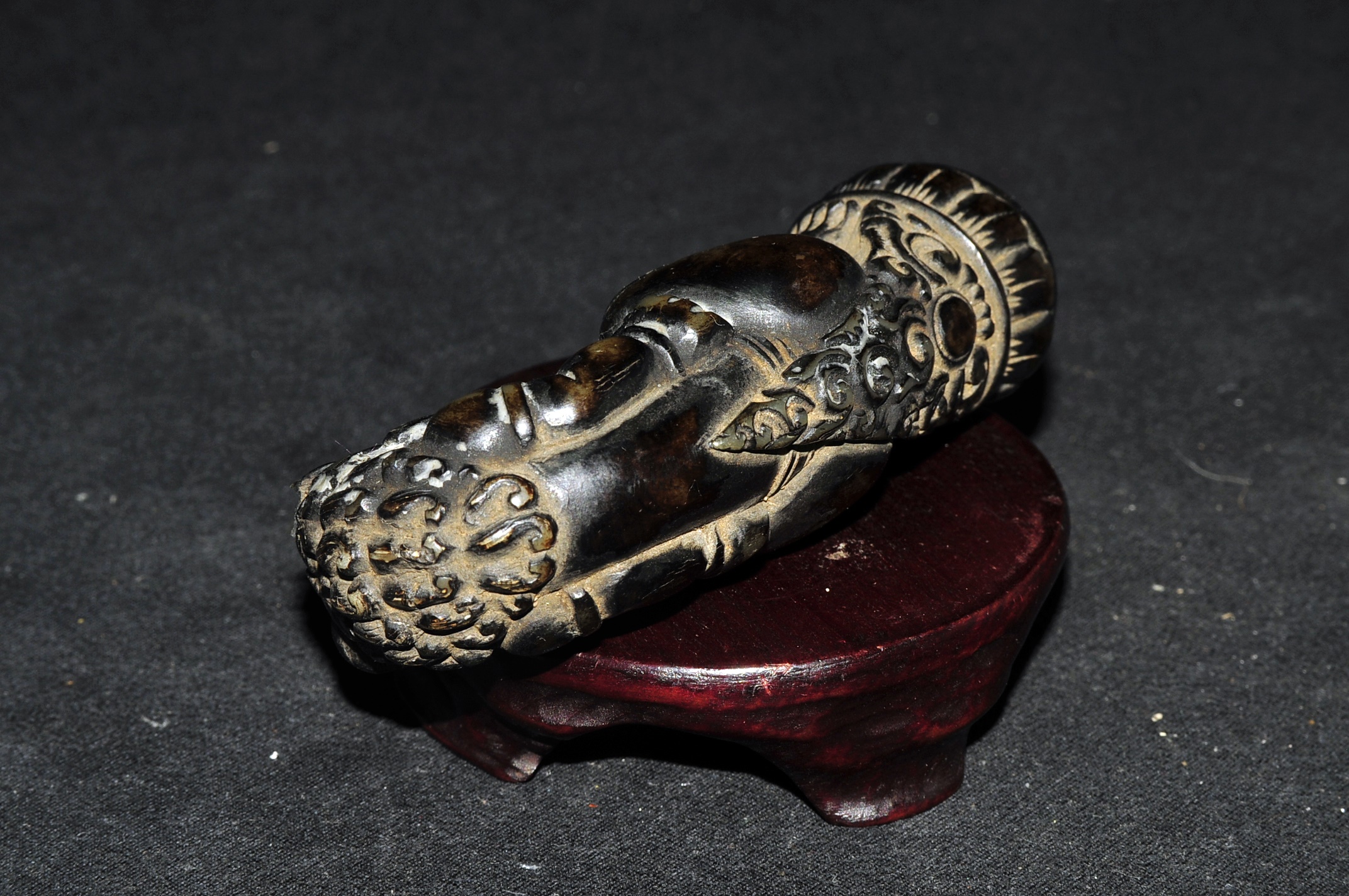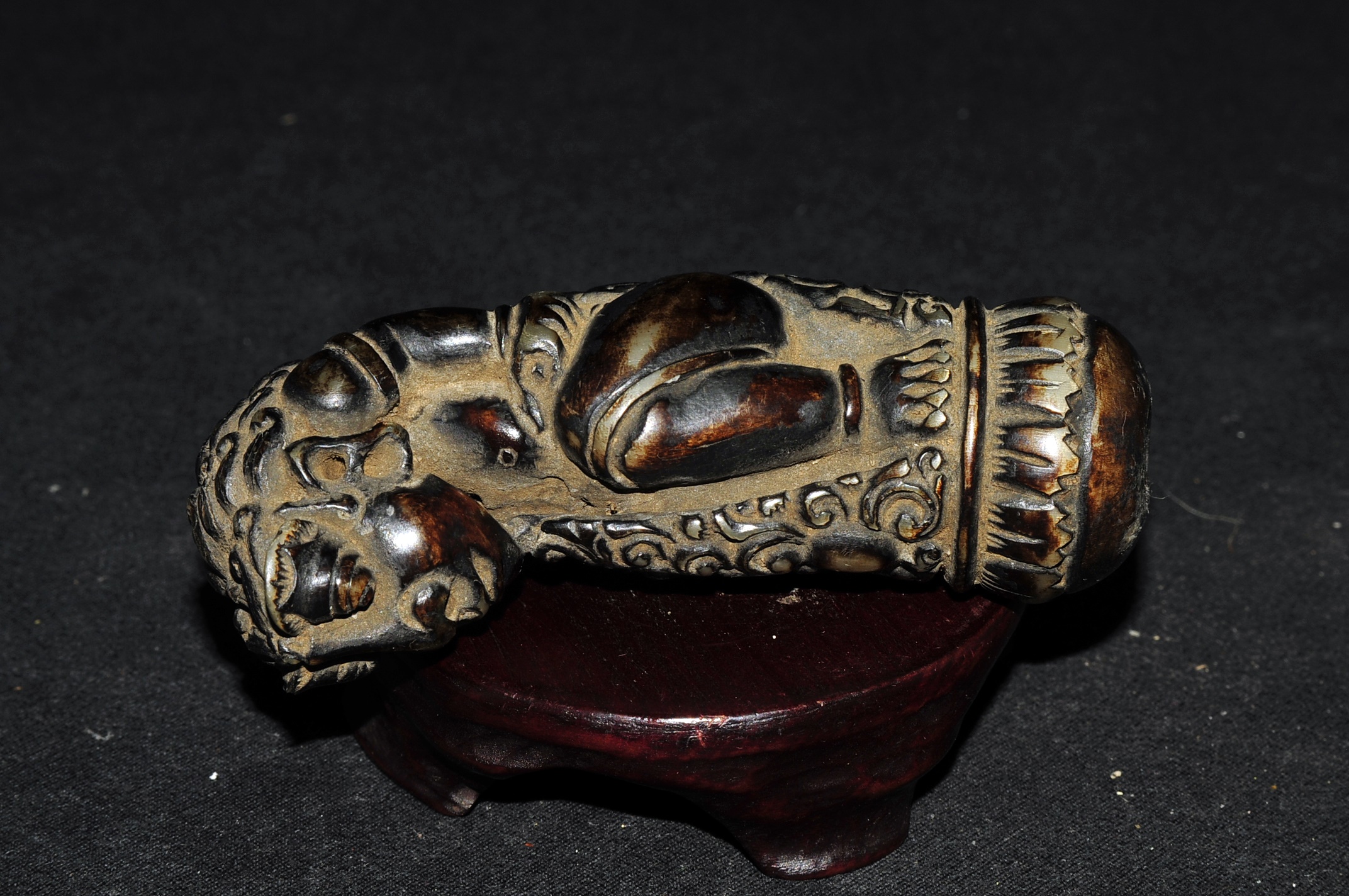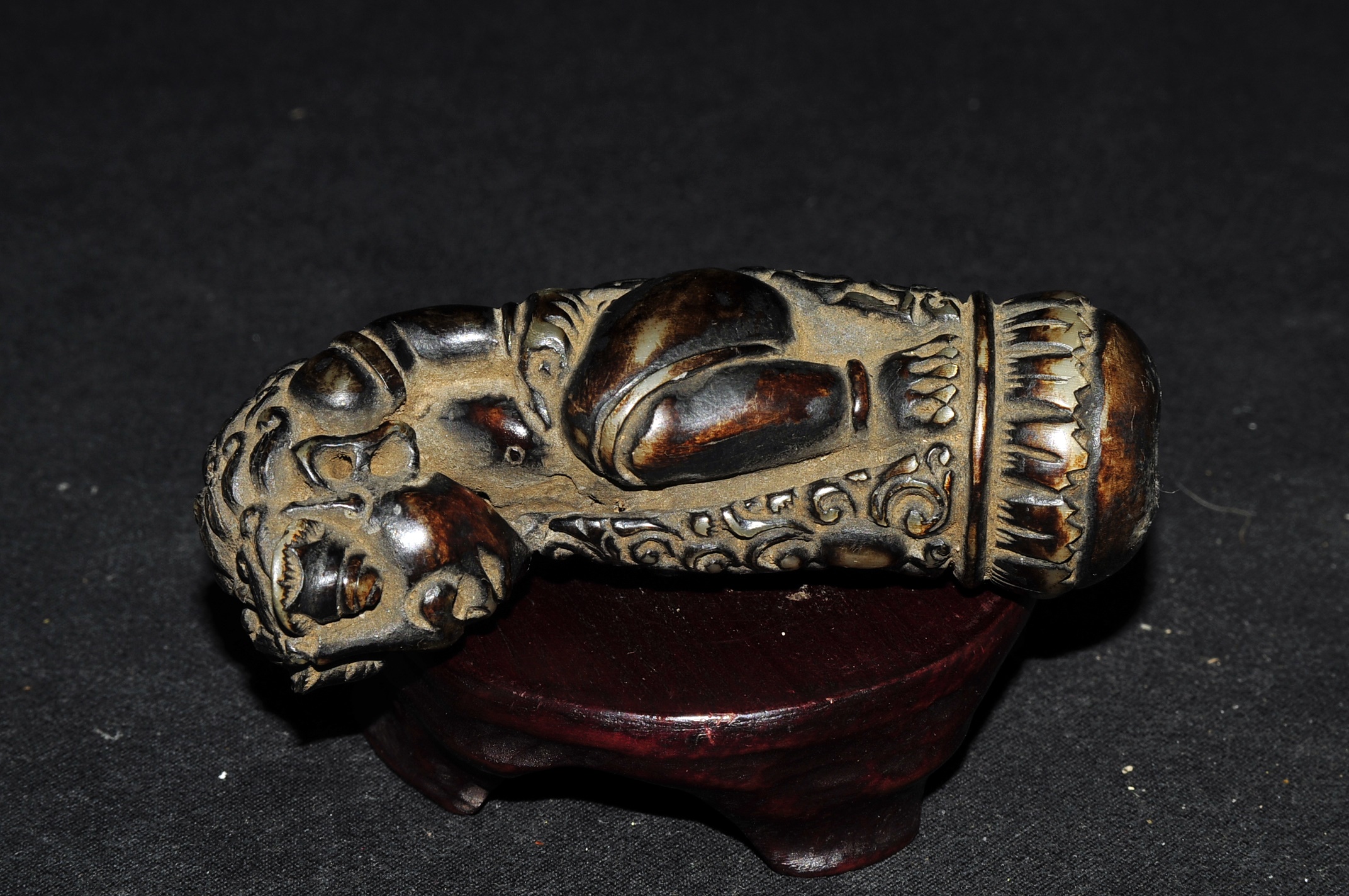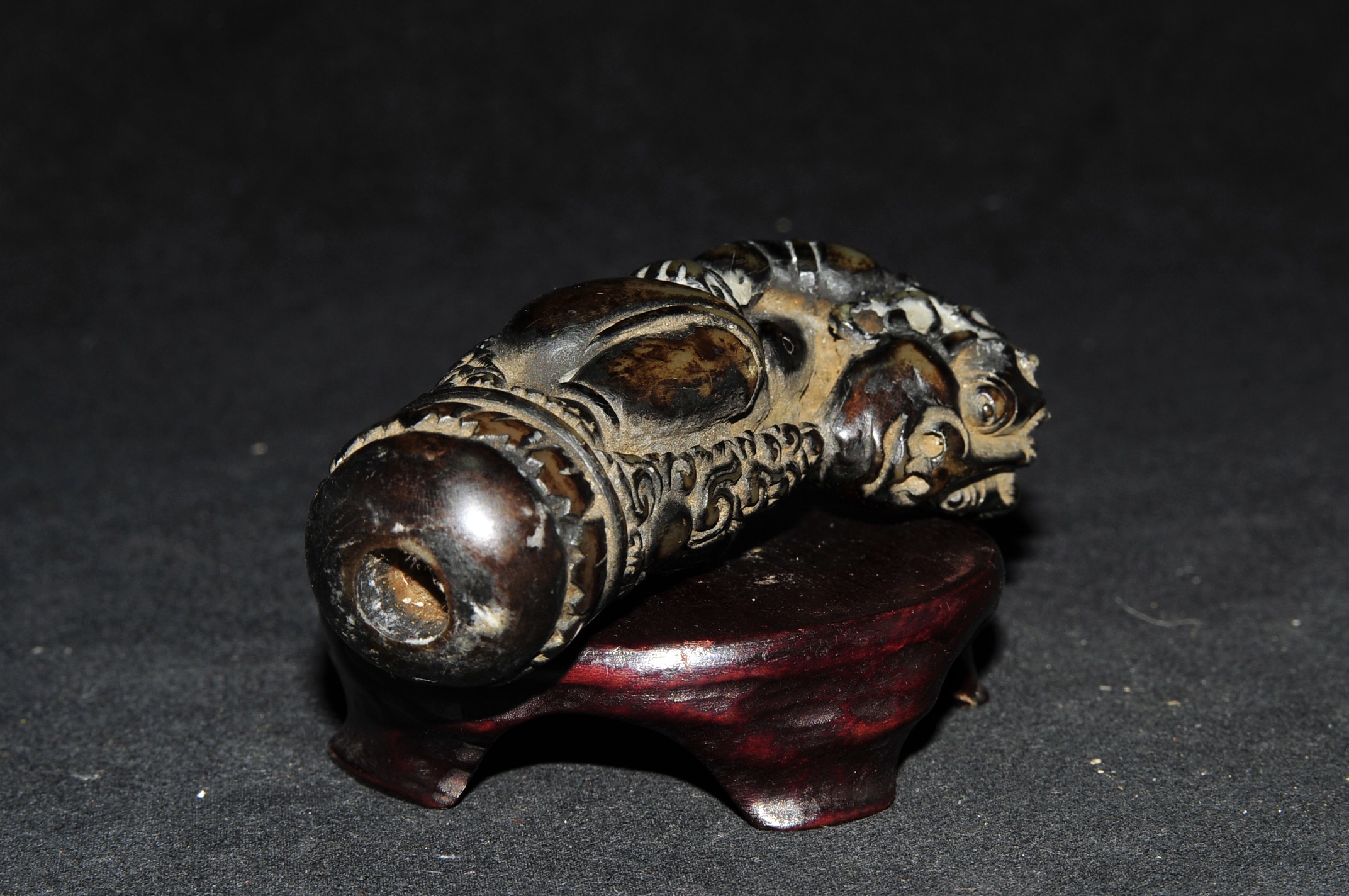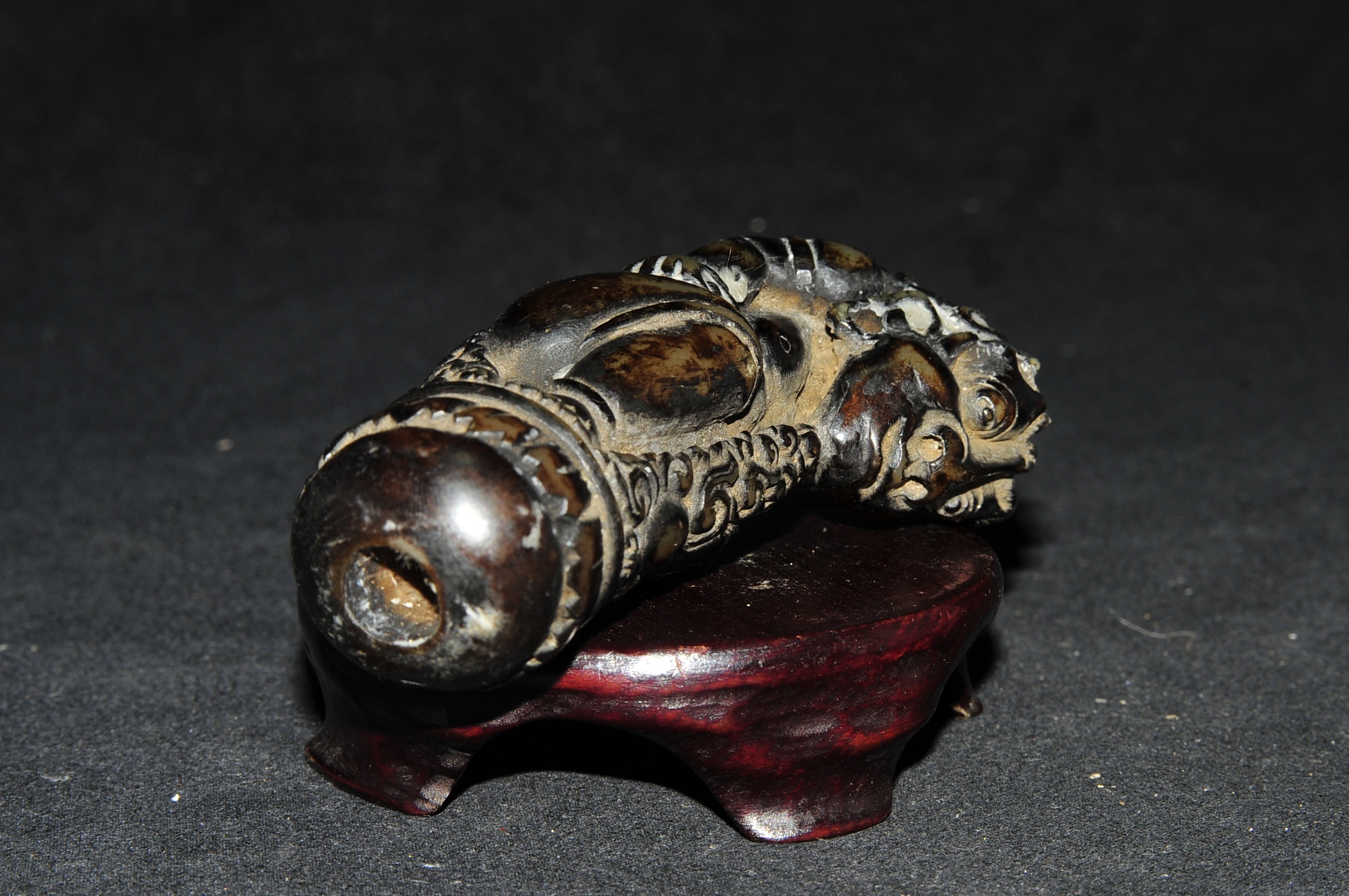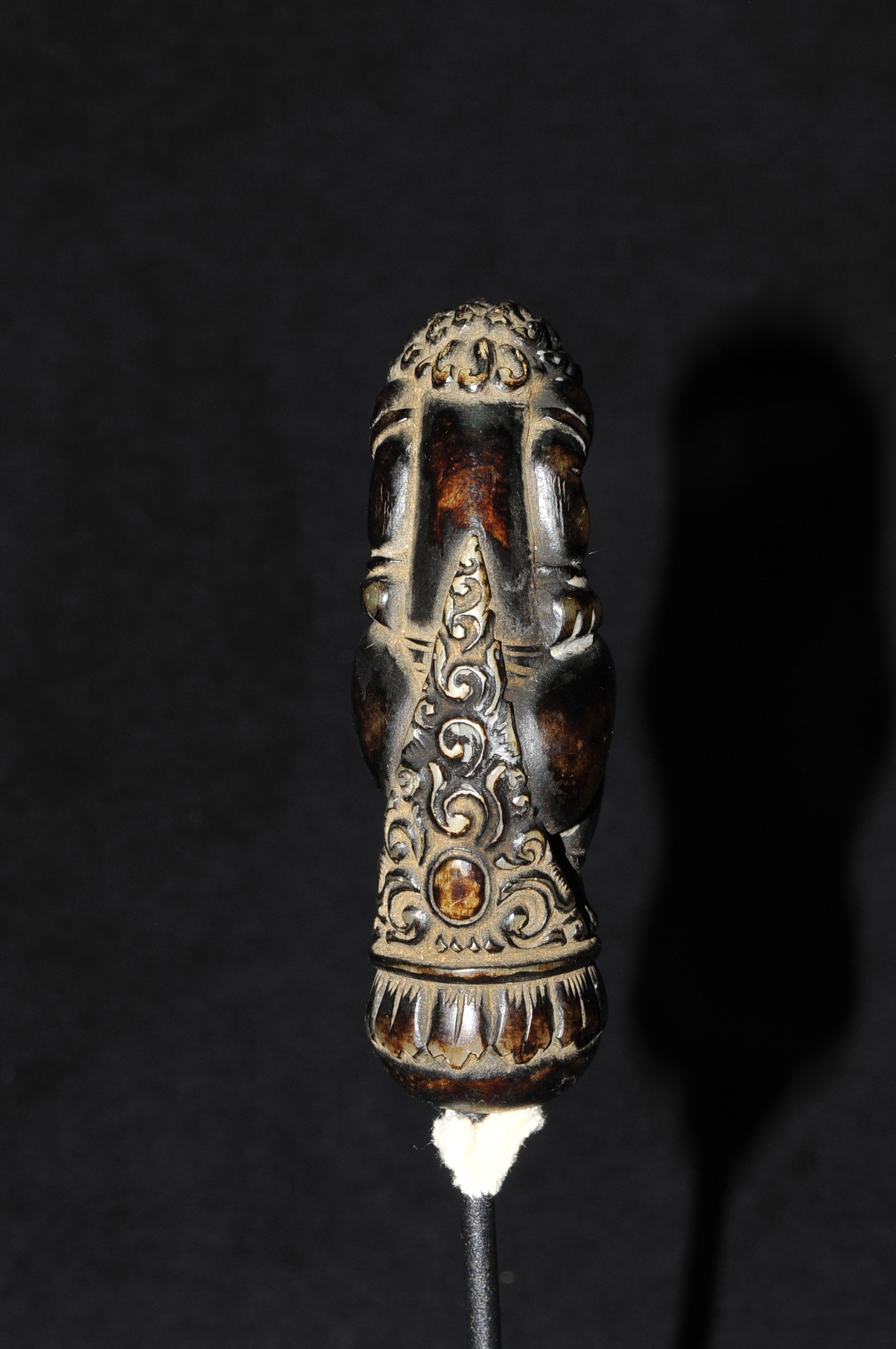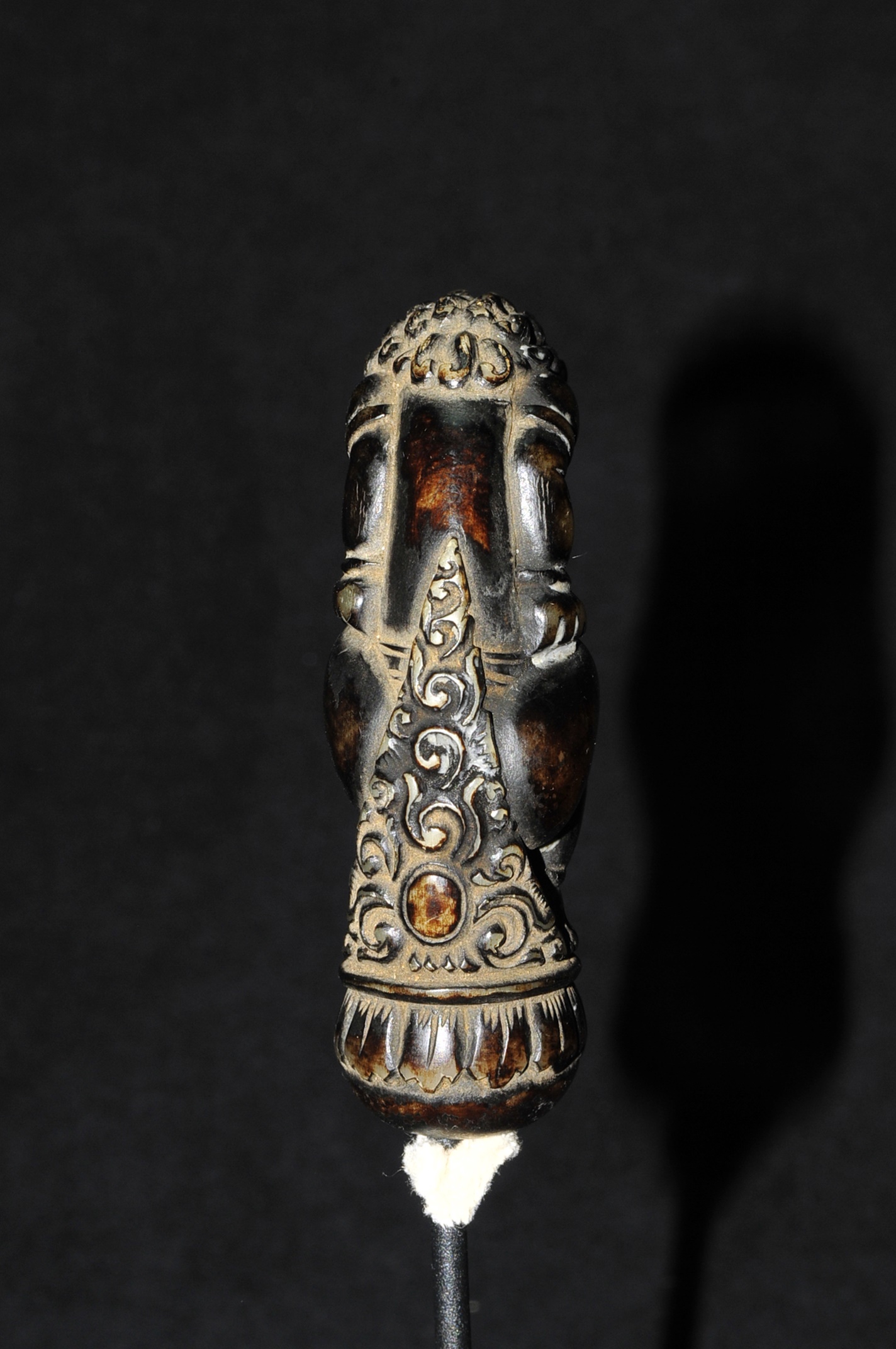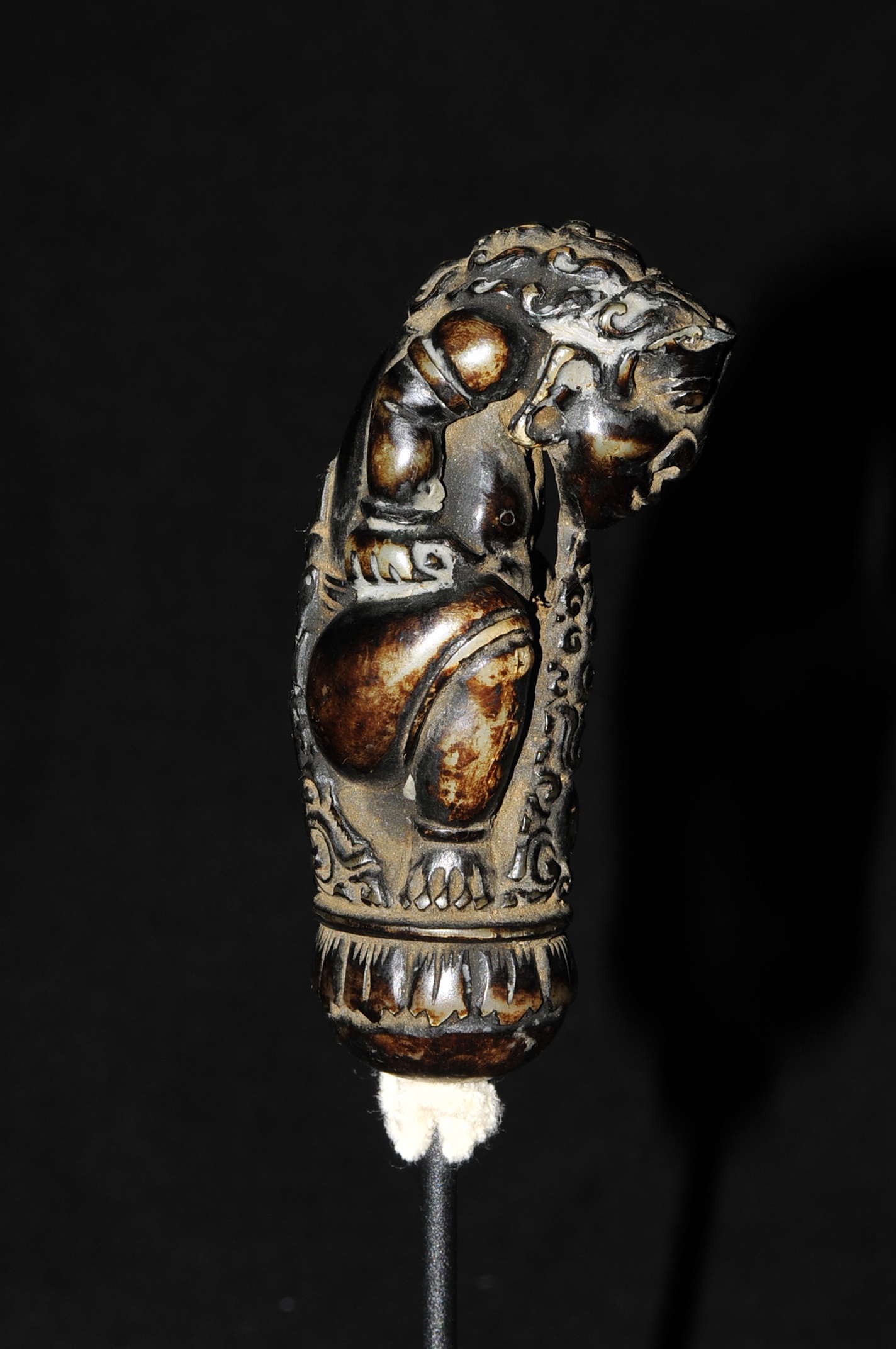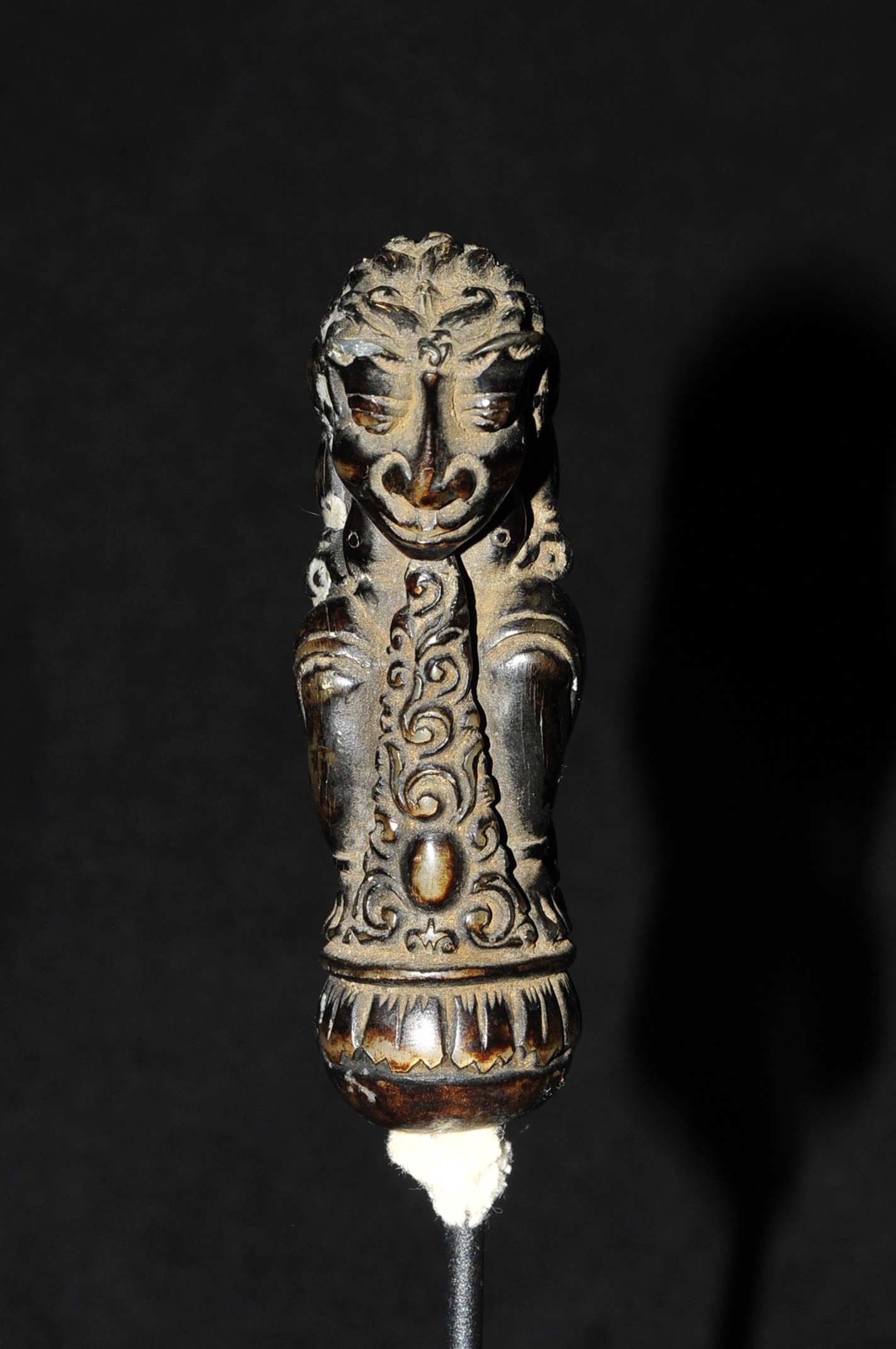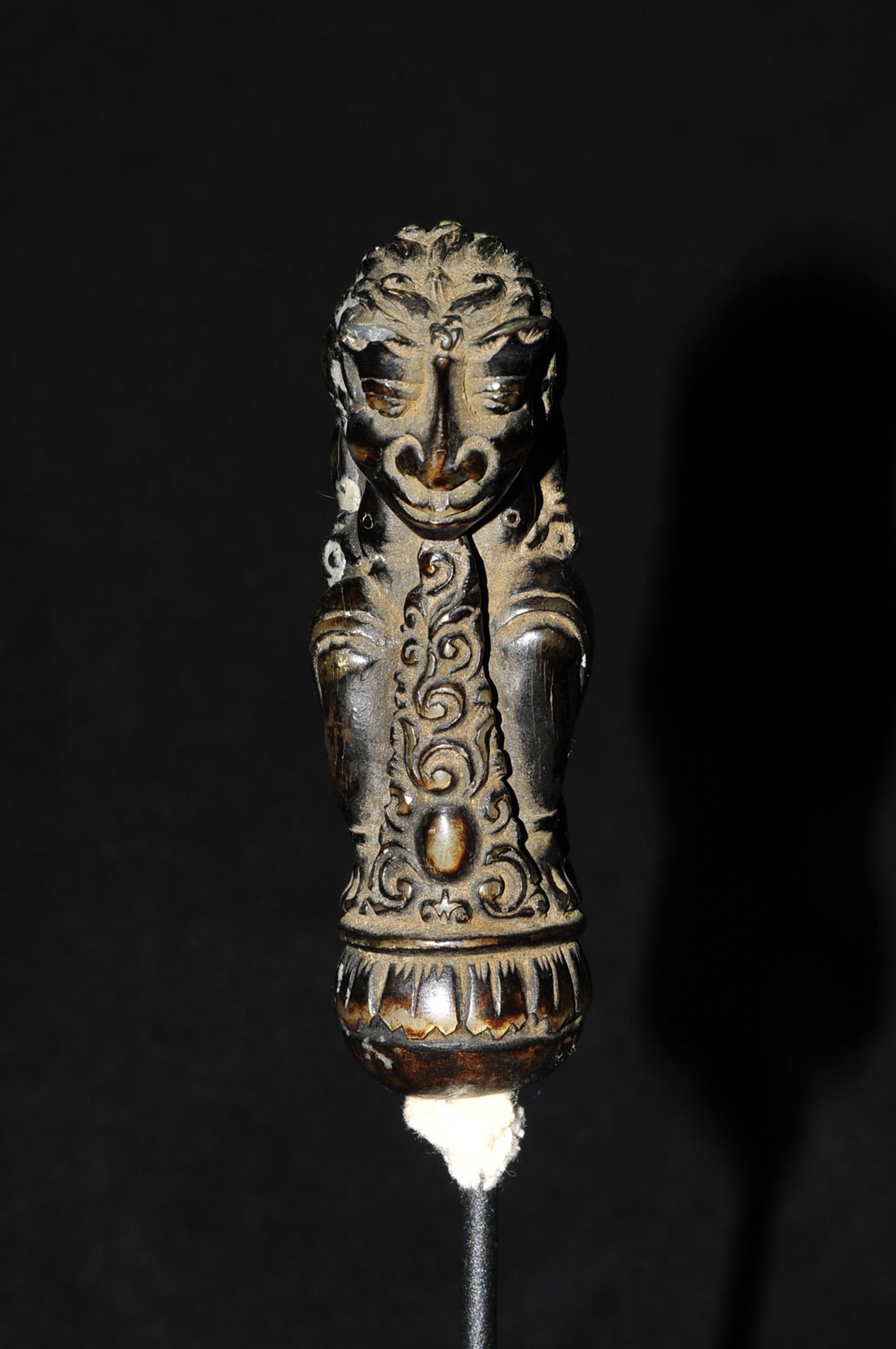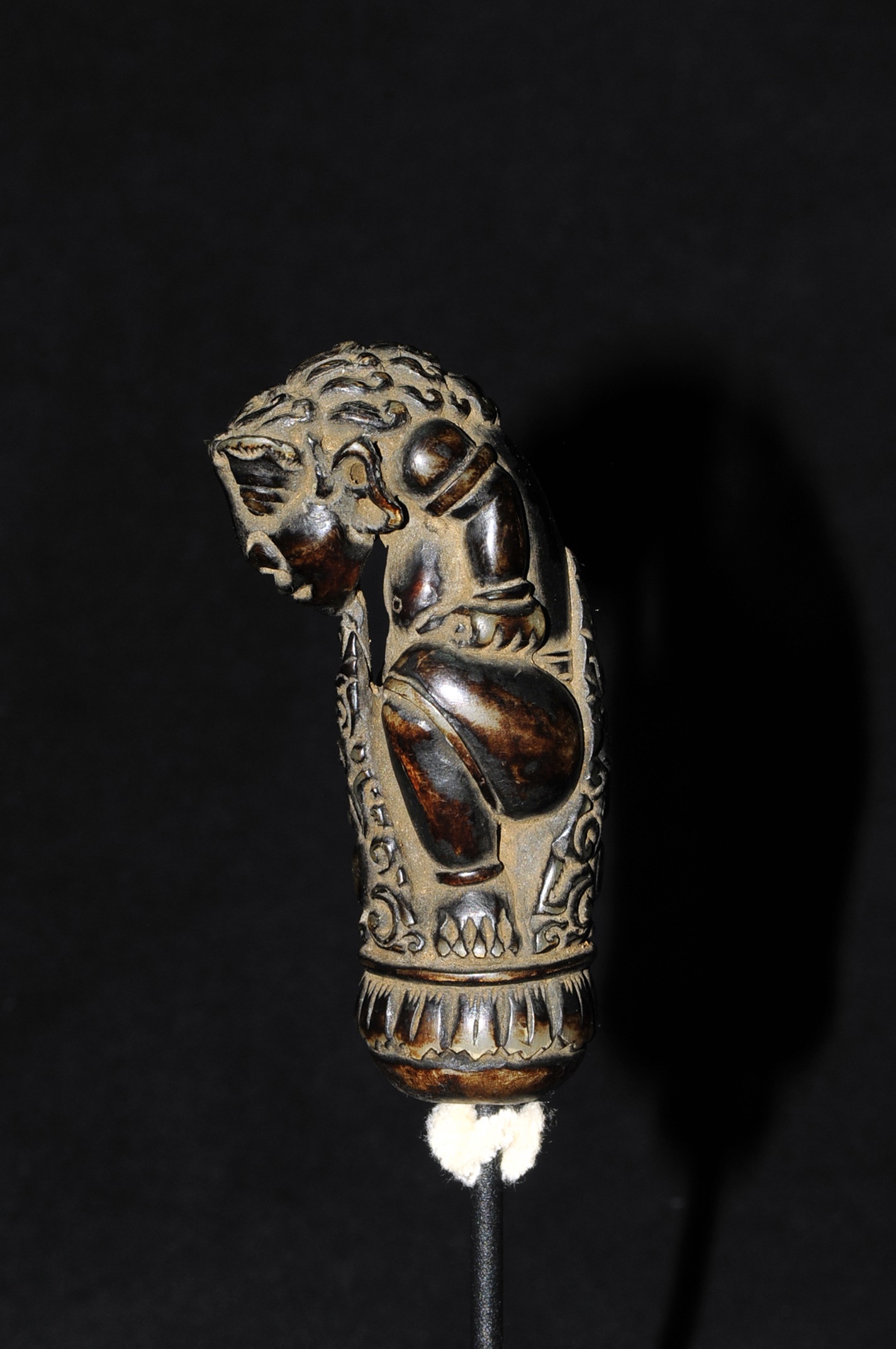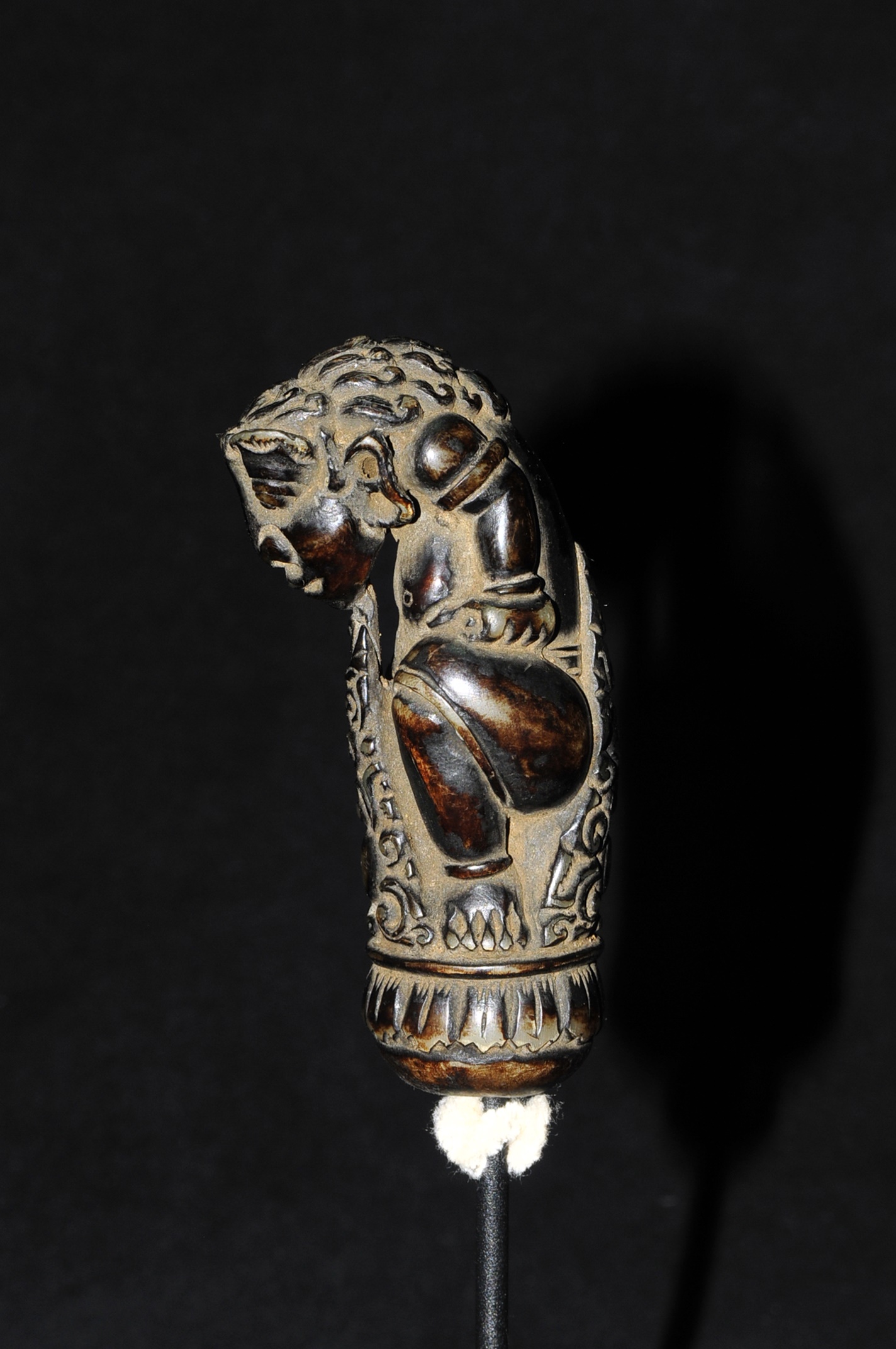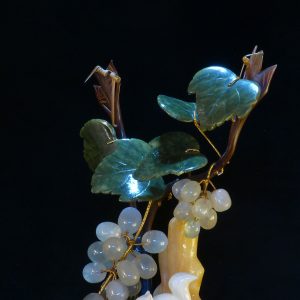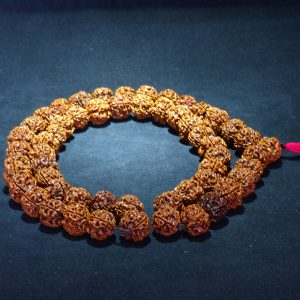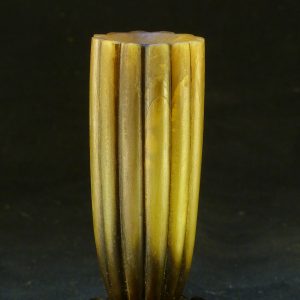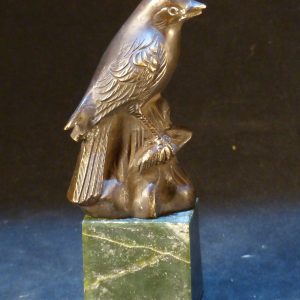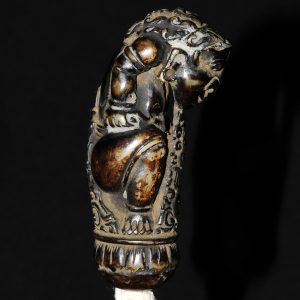Description
12-14世纪 印尼爪哇 犀角 雕 酋长人物像 刀柄
参考:纽约大都会博物馆 12-14世纪 印尼 爪哇 铜雕妇女立像 Standing Woman 12th–14th century(?) Indonesia (Java)

Object Details
Period:late Eastern Javanese period
Date:12th–14th century(?)
Culture:Indonesia (Java)
Medium:Bronze
Dimensions:H. 3 11/16 in. (9.3 cm)
Classification:Sculpture
Credit Line:Samuel Eilenberg Collection, Gift of Samuel Eilenberg, 1987
Accession Number:1987.142.231
Provenance
Samuel Eilenberg , New York (until 1987; donated to MMA)
Timeline of Art History
Timelines
Southeast Asia, 1000-1400 A.D.
参考:Maynards. FINE ART & ANTIQUES
Sale 238 Lot 475
An 18th century Sumatra Indonesian horn, kris handle on gilt copper base
length: 5 1/4 in. (13.3 cm)
Estimate $ 800-1,200
KERIS-HILT, KRIS-HANDLE, KERIS, KRIS, BALI, INDONESIA
Kris Handle
Keris, from antiquity to the present has become an object of interest to have as a collection of objects, is seen as an art form and a very beautiful spiritual and discussed from various aspects. Not only on the physical and non-physical aspects, but also aspects of the history and evolution of development.
Call it a few dagger which until now have always debated as artificial dagger Gandring MPU of Singosari era that continues to be debated to this day without ever proved its existence except in terms of aspects of the philosophy of history, legend of Lean Mix Majapahit kris, kris Tamingsari origin and more. All it turns increasingly enrich the keris culture, both in the country and in foreign countries.
In Indonesia, especially Java, Sumatra and Bali and Bugis, has known since antiquity Kabudhaan dagger. The development of the science of making a dagger, the prestige of science application to the understanding of the meaning of philosophy dagger growing increasingly advanced years, until the kingdom of Singosari to Sultan Agung of Mataram, even until now, kris has been positioned as a multi-function and multi-object meaning. Sometimes we find a dagger that is considered as “Sikep” or “Piyandel”, there is also a dagger that is used as the “ultimate weapon” during the war, dagger can also be used as a “Sengkalan” or a sign of an important event, as well as various other functions of kris very much.
In a traditional Javanese culture, kris not only mataa regarded as stabbing weapon that has a unique shape and beauty of prestige, but also as a spiritual culture completeness. The portions are enough for the handle of a dagger is. Because different dagger handles in each area.
This dagger grip various motives, for Balinese keris there that resembles a statue of the god, sculpture pedande, Raksaka statues, sculptures of dancers, ascetic, forest, and there are carved with gold and precious stones kinatah.
Sulawesi dagger grip describe seabirds. It was as symbolic of some professions Sulawesi people who are sailors, while the bird is the symbol of the world’s top safety. As the bird’s head motif also used in Riau Lingga dagger, and for other areas as aji tosan development center like Aceh, Bangkinang (Riau), Palembang, Sambas, Kutai, Bugis, Luwu, Java, Madura and Sulu, has carved dagger and a different symbol. In addition, the materials used were derived from a variety of materials such as ivory, bone, metal, and the most that wood.
To handle Javanese dagger, generally consists of sira sidekick (back of the head), Jiling, cigir, shallow, bathuk (front of the head), Weteng and cauliflower.
Tinggalkan komentar

![[临渊阁]天地一家春](https://www.antiquekeeper.ca/wp-content/uploads/2023/03/cropped-Asian-Art-Wallpaper-Painting3-6-2.jpg)

